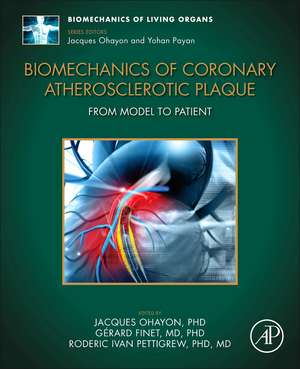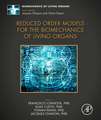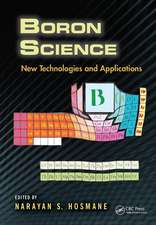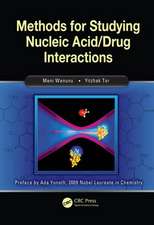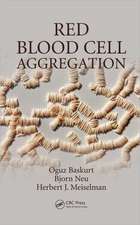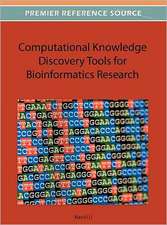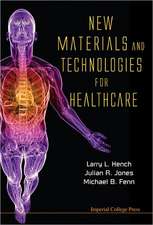Biomechanics of Coronary Atherosclerotic Plaque: From Model to Patient: Biomechanics of Living Organs
Jacques Ohayon, Gerard Finet, Roderic Pettigrewen Limba Engleză Paperback – 17 mar 2020
This volume is part of the Biomechanics of Living Organs book series. The biomechanics of human soft tissues and organs has been an emerging research field since the publication of Y.C. Fung’s original book series in the 1990s. The publication of such books entirely dedicated to a specific biomechanical subject is necessary to advance scientific research in the field of biomechanics and to transfer important knowledge to future generations. Therefore, this series of volumes on the biomechanics of living organs has been created. This series began in July 2017 with the publication of a first volume on the fundamentals of Hyperelastic Constitutive Laws for Finite Element Modeling of Living Organs. The current volume on the Biomechanics of Coronary Atherosclerotic Plaque, is the latest in this new series.
- Presents the main computational fluid dynamic studies performed, describing blood flow in healthy and pathological artery branches, including in coronary bifurcations
- Highlights the correlation between plaque initiation regions and blood shear stress amplitude
- Discusses the main biomechanical and mechanobiological models to highlight the importance of quantifying the residual and peak cap stresses and the presence of μ-calcifications to evaluate the risk of plaque rupture
- Introduces the most recent intravascular imaging biomarker techniques (elastography, palpography and modulography)
Preț: 964.75 lei
Preț vechi: 1271.33 lei
-24% Nou
Puncte Express: 1447
Preț estimativ în valută:
184.60€ • 193.26$ • 152.75£
184.60€ • 193.26$ • 152.75£
Carte tipărită la comandă
Livrare economică 31 martie-14 aprilie
Preluare comenzi: 021 569.72.76
Specificații
ISBN-13: 9780128171950
ISBN-10: 0128171952
Pagini: 686
Dimensiuni: 191 x 235 mm
Greutate: 1.21 kg
Editura: ELSEVIER SCIENCE
Seria Biomechanics of Living Organs
ISBN-10: 0128171952
Pagini: 686
Dimensiuni: 191 x 235 mm
Greutate: 1.21 kg
Editura: ELSEVIER SCIENCE
Seria Biomechanics of Living Organs
Public țintă
Biomedical engineers, biomechanical engineers, graduate students of biomedical engineering, clinicians, tissue engineersCuprins
Part 1: Biology, Physiopathology, Hemodynamics, Myogenic Responses and Clinical Intravascular Imaging of the Coronary Vascular Wall
1. Biomechanical Regulation of Endothelial Function in Atherosclerosis
2. Molecular mechanisms of the vascular responses to hemodynamic forces
3. Advanced atherosclerotic plaques in animal models versus human lesions: key elements to translation
4. Modeling the Glagov’s compensatory enlargement of human coronary atherosclerotic plaque
5. Measuring coronary arterial compliance and vasomotor response in clinical and research settings
6. Coronary intravascular ultrasound and optical coherence tomography imaging and clinical contexts in coronary hemodynamics
7. The interaction of biochemical, biomechanical and clinical factors of coronary disease: review and outlook
Part 2: Modeling Blood Flow in Arterial Branches and Bifurcations
8. Local blood flow parameters and atherosclerosis in coronary artery bifurcations
9. Effect of regional analysis methods on assessing the association between wall shear stress and coronary artery disease progression in the clinical setting
10. Hemodynamic disturbance due to serial stenosis in human coronary bifurcations: A computational fluid dynamics study
11. Hemodynamic perturbations due to the presence of stents
12. A new reduced-order model to assess the true fractional flow reserve of a left main coronary artery stenosis with downstream lesions and collateral circulations: an in vitro study
Part 3: Fluid-Structure Interaction, Stress Distribution and Plaque Rupture in Arterial Wall
13. In vitro, primarily microfluidic models for atherosclerosis
14. Prediction of the coronary plaque growth and vulnerability change by using patient-specific 3D FSI models based on intravascular ultrasound and optical coherence tomography follow-up data
15. Atheromatous plaque initiation and growth: a multiphysical process explored by an in-silico mass transport model
16. Emergent biomechanical factors predicting vulnerable coronary atherosclerotic plaque rupture
17. Microcalcifications and plaque rupture
18. Identification of coronary plaque mechanical properties from ex-vivo testing
19. Importance of residual stress and basal tone in healthy and pathological human coronary arteries
Part 4: Imaging Inflammatory Biomarkers for in vivo Intravascular Plaque Characterization
20. Intravascular ultrasound imaging of human coronary atherosclerotic plaque: novel morpho-elastic biomarkers of instability
21. Magnetic resonance elastography for arterial wall characterization
22. Noninvasive ultrafast ultrasound for imaging the coronary vasculature and assessing the arterial wall’s biomechanics
23. Pulse wave imaging for the mechanical assessment of atherosclerotic plaques
Part 5: Stenting, Coated Balloon, Drug Elution Systems and Modelling
24. Structure-function relation in the coronary artery tree: theory and applications in interventional cardiology
25. Sequential technique for the stenting of a coronary bifurcation: the re-proximal optimizing technique strategy
26. Modeling the stent deployment in coronary arteries and coronary bifurcations
27. The coated balloon protocol: An emergent clinical technique
28. Endovascular drug delivery and drug-elution systems
1. Biomechanical Regulation of Endothelial Function in Atherosclerosis
2. Molecular mechanisms of the vascular responses to hemodynamic forces
3. Advanced atherosclerotic plaques in animal models versus human lesions: key elements to translation
4. Modeling the Glagov’s compensatory enlargement of human coronary atherosclerotic plaque
5. Measuring coronary arterial compliance and vasomotor response in clinical and research settings
6. Coronary intravascular ultrasound and optical coherence tomography imaging and clinical contexts in coronary hemodynamics
7. The interaction of biochemical, biomechanical and clinical factors of coronary disease: review and outlook
Part 2: Modeling Blood Flow in Arterial Branches and Bifurcations
8. Local blood flow parameters and atherosclerosis in coronary artery bifurcations
9. Effect of regional analysis methods on assessing the association between wall shear stress and coronary artery disease progression in the clinical setting
10. Hemodynamic disturbance due to serial stenosis in human coronary bifurcations: A computational fluid dynamics study
11. Hemodynamic perturbations due to the presence of stents
12. A new reduced-order model to assess the true fractional flow reserve of a left main coronary artery stenosis with downstream lesions and collateral circulations: an in vitro study
Part 3: Fluid-Structure Interaction, Stress Distribution and Plaque Rupture in Arterial Wall
13. In vitro, primarily microfluidic models for atherosclerosis
14. Prediction of the coronary plaque growth and vulnerability change by using patient-specific 3D FSI models based on intravascular ultrasound and optical coherence tomography follow-up data
15. Atheromatous plaque initiation and growth: a multiphysical process explored by an in-silico mass transport model
16. Emergent biomechanical factors predicting vulnerable coronary atherosclerotic plaque rupture
17. Microcalcifications and plaque rupture
18. Identification of coronary plaque mechanical properties from ex-vivo testing
19. Importance of residual stress and basal tone in healthy and pathological human coronary arteries
Part 4: Imaging Inflammatory Biomarkers for in vivo Intravascular Plaque Characterization
20. Intravascular ultrasound imaging of human coronary atherosclerotic plaque: novel morpho-elastic biomarkers of instability
21. Magnetic resonance elastography for arterial wall characterization
22. Noninvasive ultrafast ultrasound for imaging the coronary vasculature and assessing the arterial wall’s biomechanics
23. Pulse wave imaging for the mechanical assessment of atherosclerotic plaques
Part 5: Stenting, Coated Balloon, Drug Elution Systems and Modelling
24. Structure-function relation in the coronary artery tree: theory and applications in interventional cardiology
25. Sequential technique for the stenting of a coronary bifurcation: the re-proximal optimizing technique strategy
26. Modeling the stent deployment in coronary arteries and coronary bifurcations
27. The coated balloon protocol: An emergent clinical technique
28. Endovascular drug delivery and drug-elution systems
